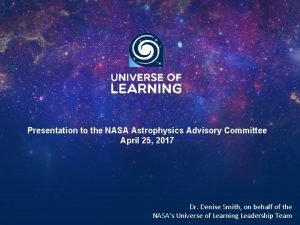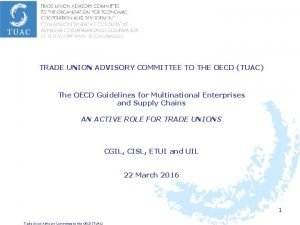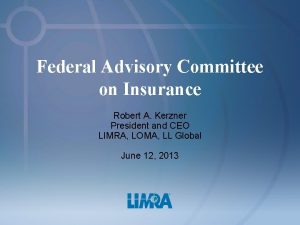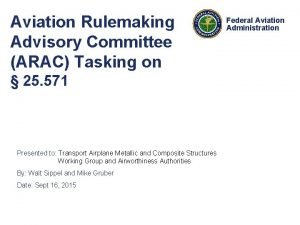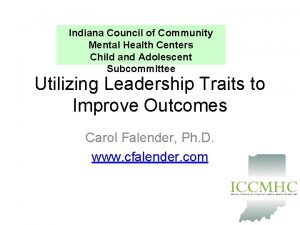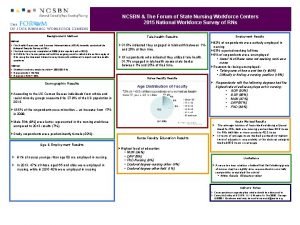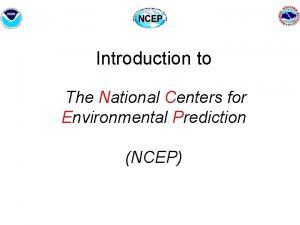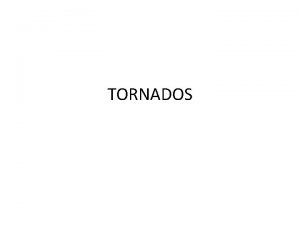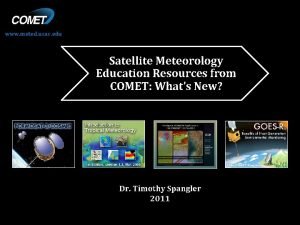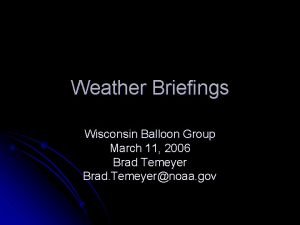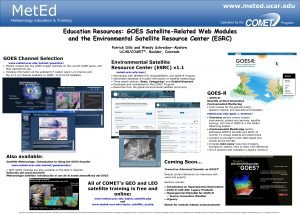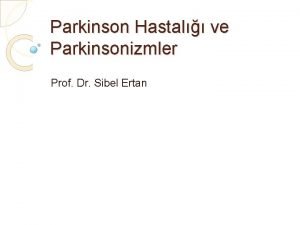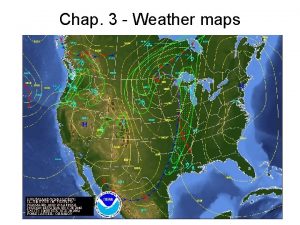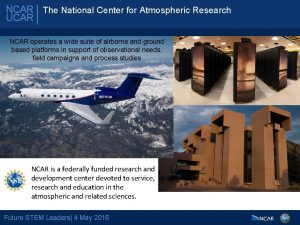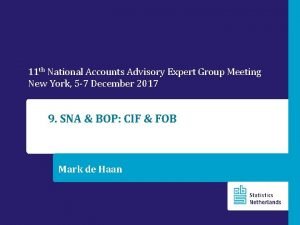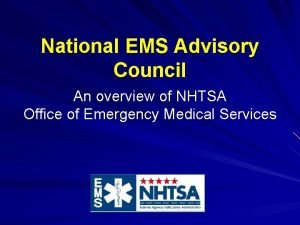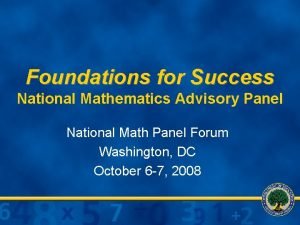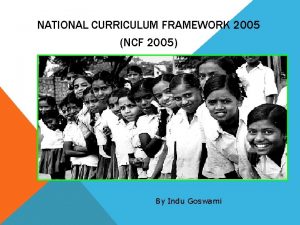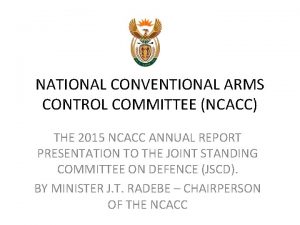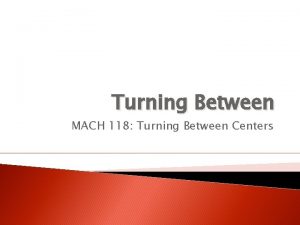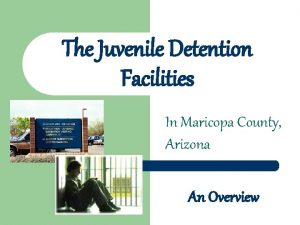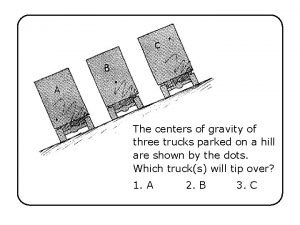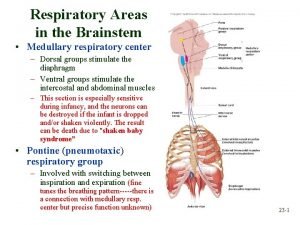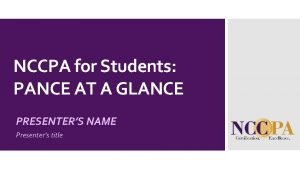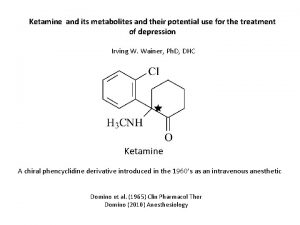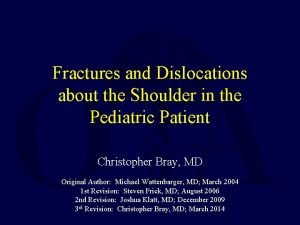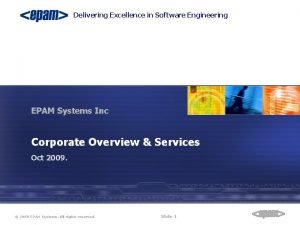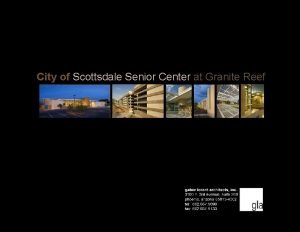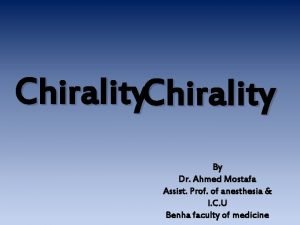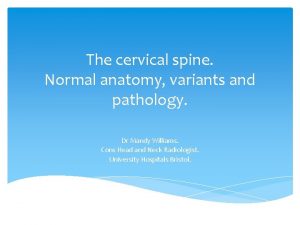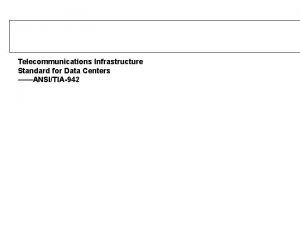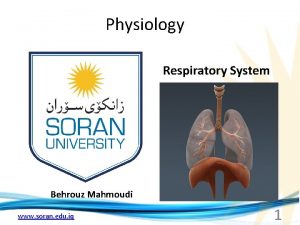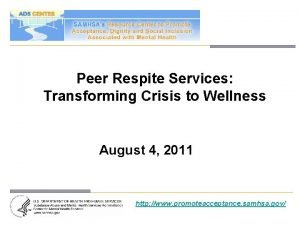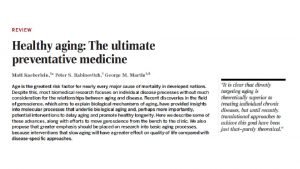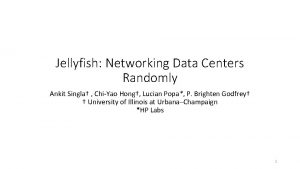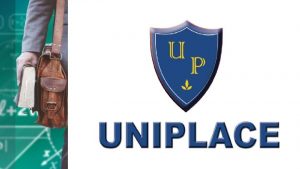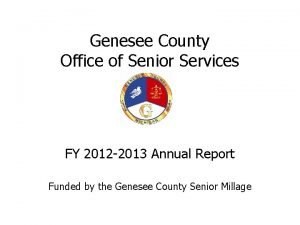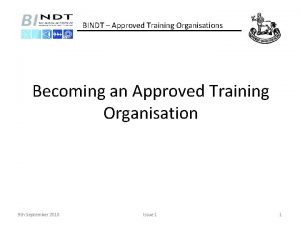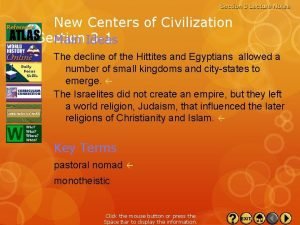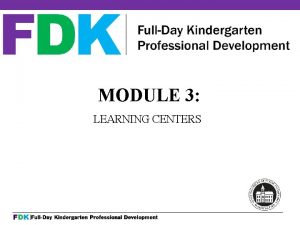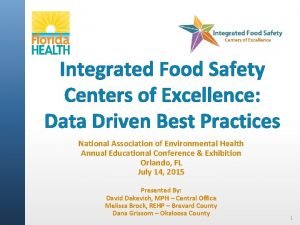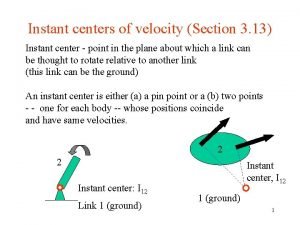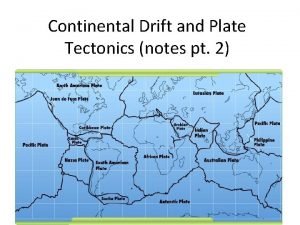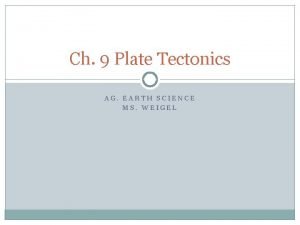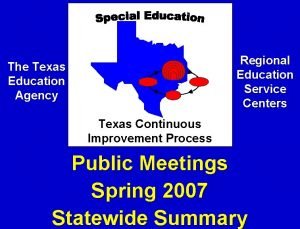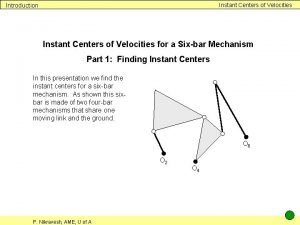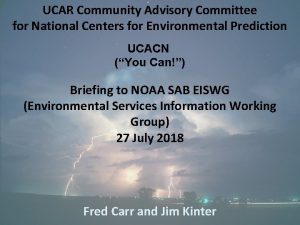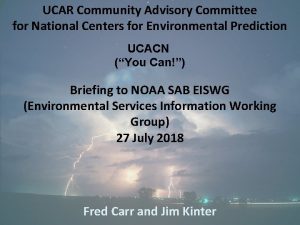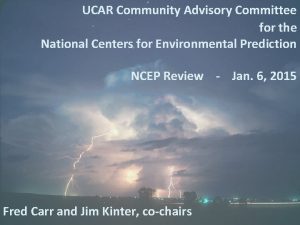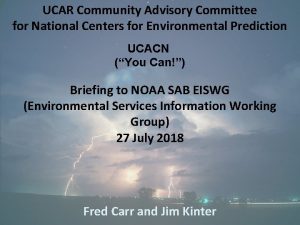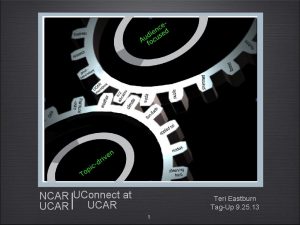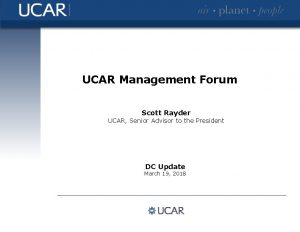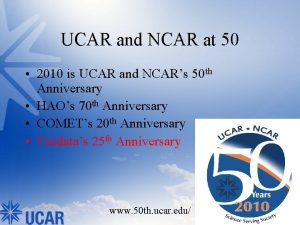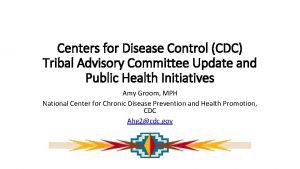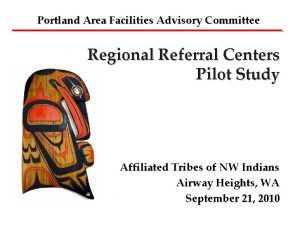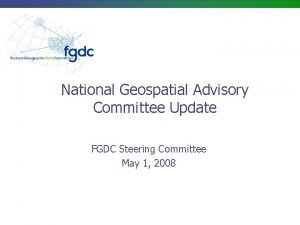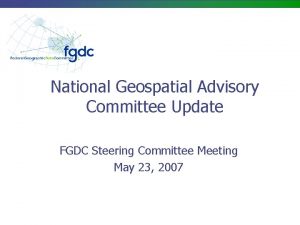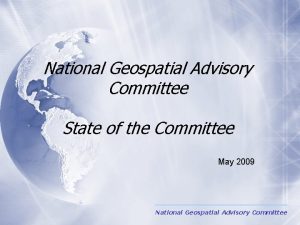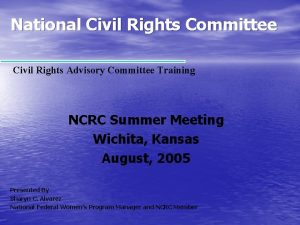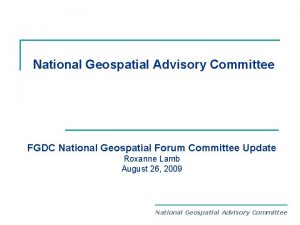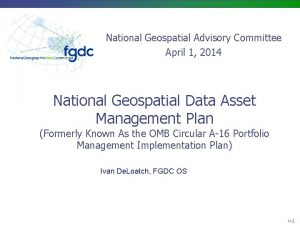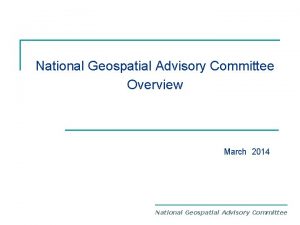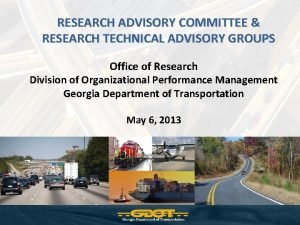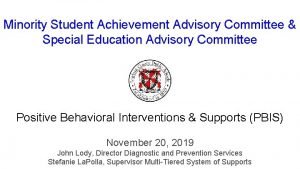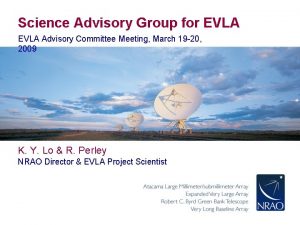UCAR Community Advisory Committee for National Centers for


























































- Slides: 58

UCAR Community Advisory Committee for National Centers for Environmental Prediction UCACN (“You Can!”) Briefing to NOAA SAB EISWG (Environmental Services Information Working Group) 27 July 2018 Fred Carr and Jim Kinter

Outline • UCACN – – Context: Background on NOAA, NWS, NCEP What is UCACN? Major Findings and Recommendations Thoughts on Going Forward • UMAC – – What is UMAC? The Problem Findings and Recommendations Messages to NOAA Leadership • CMC – New OSTI review committee 2

UCACN 3

4

Context: NWS Organization $$ 5

Courtesy Mike Farrar (current: June 2017) 6

Context: NCEP Strategic Plan Mission: NCEP delivers national and global operational weather, water and climate products and services essential to protecting life, property and economic well-being. Vision: The trusted source for environmental predictions from the sun to the sea, when it matters most. Unique Value Proposition: CORE VALUES NCEP science-based operational products and Personal Accountability Scientific Integrity services are essential to public safety and Honesty foundational to the national and global weather, Trust water and climate enterprises. 7

Context: How NCEP Perceives its Mission w. r. t. WRN Ø Climate Modeling and Prediction Ø National Earth System Prediction Capability Ø Ø Ø North American Multi-Model Ensemble Next Generation Global Prediction System Hurricane Forecast Improvement Project Hi-Impact Weather Prediction Project Warn on Forecast Storm Surge Roadmap National Air Quality Forecast Capability Tsunami Modeling and Research Space Weather Modeling Ecological Forecasting Integrated Water Resources Science and Services NWS Strategic Goals • Improve Weather Impact-Based Decision Support Services • Improve Water Forecasting Services • Enhance Climate Services and adapt to climate-related risks • Improve sector-relevant information in support of economic productivity • Enable environmental forecast services supporting healthy communities and ecosystems • Sustain a highly skilled, professional workforce equipped with training, tools, and infrastructure to meet mission Sector-Relevant = Energy, Transportation, Agriculture, Coastal 8 From Bill Lapenta, Director NCEP, January 2015

UCAR Community Advisory Committee for NCEP UCACN’s Major Goal: Helping NCEP establish clear leadership in the world as The Nation’s trusted source for environmental predictions from the sun to the sea, when it matters most 9

UCAR Community Advisory Committee for NCEP Structure • Established by UCAR in 2011 in response to recommendation of 2009 UCAR Review of NCEP; disbanded in 2018 • Approximately 12 -14 members (3 -year terms, renewable once), including experts in each of the diverse areas of responsibility of the NCEP Centers, drawn from academia, NGOs, the private sector and Federal and state agencies, and selected by the President of UCAR, in consultation with the (co-)Chair(s) of the UCACN and the Director of NCEP • Chair or co-Chairs of the UCACN appointed by UCAR President • UCACN met at least annually and provided a written report of its findings and recommendations to the UCAR President. 10

UCAR Community Advisory Committee for NCEP Responsibilities • Conduct a comprehensive review of NCEP every 5 years – Assess individual Centers and their interactions with each other and with other NOAA, federal, academic and non-governmental entities – Determine how effectively NCEP is accomplishing its mission and realizing its vision – Assess productivity, quality, relevance, impact, effectiveness, and balance of Centers’ scientific activities and operational products and services • In years between reviews: – Monitor progress of the Centers in the context of the NCEP strategic plan and the previous review recommendations, and provide informal updates and advice to the UCAR President. – Provide input to the strategic planning and long-range goals of the 11 Centers and NCEP as a whole.

UCACN Members Member, Affiliation Alan Blumberg, Stevens Inst. Lance Bosart, U. Albany Gilbert Brunet, UK Met Office Fred Carr (Co-Chair), U. Oklahoma John Dutton, Prescient Weather Jim Kinter (Co-Chair) , COLA & GMU Bill Kuo, NCAR Gary Lackmann, North Carolina State U. Tsengdar Lee, NASA Peter Neilley, The Weather Company Warren Qualley, Harris Corp. Karen Shelton-Mur, FAA Shuyi S. Chen, U. Miami * OD = Office of the Director (NCEP) Expertise OPC, NHC, EMC (MMAB) HPC, NHC, SPC EMC, OD* AWC, HPC, NHC, SPC, OD CPC, EMC, NCO, OPC, OD EMC, NCO HPC, SPC, OPC EMC, NCO NHC AWC SWPC NHC 12

UCACN Activities • The 2009 -10 UCAR Review formulated 263 recommendations to NCEP. In response, NCEP developed action plans worked into Annual Operating Plans and coordinated with NWS HQ and NOAA Budget and Planning process. One of the recommendations was the creation of UCACN. • UCACN met annually in 2011 – 2017 to update the 2009 -2010 review and from time to time review specific activities of NCEP (e. g. Test Beds). Review reports are public: http: //www. vsp. ucar. edu/UCACN/index. html • UCACN never did a second stem-to-stern review of NCEP – Scheduled in 2016, 2017 and 2018 but overtaken by events relating to changes in leadership and external pressures on NCEP – NCEP Director discussing possible review in 2019 13

Major Findings (1) • NCEP is performing well in its primary mission of providing products and services in support of protecting life and property in a timely manner. • Many of its service centers are recognized as world leaders in their particular missions and in making real-time weather and climate data, codes, and other products freely available. However, more needs to be done to realize the vision. • Interactions among centers are strong and increasing, indicating that NCEP as a whole is greater than the sum of its parts, but is also a work in progress. • NCEP is regarded as a national resource - opportunities exist to leverage this respect. 14

Major Findings (2) • The move to the NOAA Center for Weather and Climate Prediction (NCWCP) went very well but plans and facilities for supporting visiting scientists not fully realized. • The transitions to new computing facilities in 2013 and new HPC systems in 2016 went well. • The GSI Hybrid En. KF-3 DVAR implementation is a good example of the benefits of NCEP partnership with OAR, NASA and Universities. • Much of this progress was due to the strong leadership of the NCEP Director, which UCACN recognizes and commends. However, changes of leadership and delays in replacing key leaders have slowed progress. • NCEP is under-resourced for its mission. • NCEP computing resources are not commensurate with the demands of the mission. • EMC is not equipped to fulfill its vision to provide world-leading models with its current structure and broad portfolio. 15

How NCEP Has Responded to UCACN Recommendations (Examples) • Develop strategic plan for unified atmospheric, oceanic and coupled modeling system in concert with other parts of NOAA and the weather & climate enterprise – Strategic Plan and Roadmap under development – With funding from NGGPS, NCEP has partnered with other parts of NOAA and the outside community to develop a unified modeling Strategic Implementation Plan (next meeting on 1 -3 August 2018) – see UMAC below • Strengthen partnerships to develop next data assimilation and ensemble systems - e. g. , hybrid En. KF-4 DVar; NMME – Development of JEDI data assimilation infrastructure • Accelerate R 20 and O 2 R; • Developed SIP process (see UMAC below) • Create IT testbed in NCO – No IT Testbed created at NCO • Work with its Centers on Impact-based Decision-support Services (IDSS) – IDSS fully ingrained in NCEP Service Centers • Support Visiting Scientist Programs - Universities; NOAA labs – A few people have visited, but the program is sub-critical 16

UCACN: What NWS/NOAA/DOC Need to Do to Position NWS/NCEP to be “Second-to-None” • • NCEP should be resourced commensurate with its broad mission to ensure improvement of the critical services it provides the nation Ensure that NCEP has adequate computational and IT resources for both operations and R&D Provide mechanisms to attract and retain highly talented scientists at NCEP Create and fill leadership positions in a more timely manner – In 2017 -2018, EMC Director position filled by “acting” director for over 8 months • Reduce NCEP’s reliance on extramural funding and avoid mission creep • Facilitate and resource NCEP’s collaboration with the Earth system modeling community to design and implement the next generation models for weather, climate and oceans • Create a grants program for weather and NWP in OAR (consistent with recent draft SAB report on NOAA R&D portfolio) • Develop a strategic multi-agency plan for sustaining the NMME 17

Going Forward - Carr/Kinter Views (2014) How can U. S. rise to the challenge of serving the Nation adequately in a time of increasing high-impact weather and climate events, i. e. , becoming the “Coordinated Giant” w. r. t. providing “Second to None” weather and climate forecast services? • Ways forward: § § § Adopt the recommendations of UCACN! Enhance grants programs to better entrain research partners Get moving on Network of Networks; national BL observing network Ensure the success of Visiting Scientist Programs (need NOAA support) Ensure effective NCEP participation in and influence on Open Environmental Services Manage space weather issues among NWS, NESDIS, NASA and Air Force (OFCM initiative to unify space weather capability across space weather community) • Challenges: § Perennial budget uncertainty § Attracting/retaining the best people § Leadership changes and vacancies in NOAA 18

UMAC 19

Formation of UMAC • In January 2015 the NCEP Director charged the UCACN to form a subcommittee to perform a strategic review of the major components in the NCEP Production Suite (NPS) in August 4 -7, 2105 that will be used to inform the development of the Unified NOAA Modeling Strategy (first ever holistic technical review of the NPS ) • UMAC was requested to provide a comprehensive, technical review of the NPS strategy for development. (Lack of a well-defined NOAA modeling strategy is problematic given recent investments in science and high performance computing) • Lifetime of 3 years - sunsetted in January, 2018

UMAC Members Ex officio UMAC Members Frederick Carr, co-chair University of Oklahoma Richard Rood, co-chair University of Michigan Alan Blumberg Stevens Tech Chris Bretherton University of Washington Eric Chassignet Florida State University Brian Colle Stony Brook University James Doyle NRL Monterey Anke Kamrath NCAR CISL Jim Kinter George Mason University Cliff Mass University of Washington Peter Neilley WSI – TWC – IBM Christa Peters-Lidard NASA Goddard Tom Hamill NOAA-ESRL-PSD Andy Brown UK Met Office Ben Kirtman University of Miami Gary Lackmann N. C. State Gilbert Brunet Environment Canada Bill Kuo UCAR-UCP Tsengdar Lee NASA HQ

THE PROBLEM 20 -year Trend in NH Skill (500 h. Pa, Day 5) Black-EC Red-NCEP Worse NCEP-ECMWF

GFS, MOM 4, NOAH, Sea Ice Regional Hurricane Waves Wave. Watch III NWPS GFDL WRF-NMM Ocean Global Forecast System (GFS) Global Spectral NOAH Global Ensemble Forecast System (GEFS) 21 GFS Members North American Land Surface Data Assimilation System NOAH Land Surface Model PSURGE SLOSH ESTOFS NMMB NOAH Regional Bays • Great Lakes (POM) • N Gulf of Mexico (FVCOM) • Columbia R. (SELFE) • Chesapeake (ROMS) • Tampa (ROMS) • Delaware (ROMS) • San Francisco (FVCOM) Dispersion HYSPLIT Short-Range Ensemble Forecast CMAQ Rapid Refresh High Res Windows WRF(ARW, NMMB) NEMS Aerosol Global Component (NGAC) GFS & GOCART NWM Wrf-HYDRO Air Quality 3 D-VAR DA GEFS, Canadian Global Model Ew. E Regional NAM WRF(ARW, NMMB, NMM) North American Ensemble Forecast System Ecosystem ADCIRC 3 D-VAR DA 3 D-En-Var DA HYCOM SURGE SLOSH Space Weather ENLIL Geo. Space WRF ARW High Resolution RR WRF ARW 3 D-VAR DA Climate Forecast System (CFS) 3 D-VAR DA NCEP has multiple missions Leads to excessive complexity… 23

RAP NCEP Production Suite Pie Chart (systems >1% WCOSS) CFS NWM GDAS SREF GEN-OPS WAV GFS NAM HRRR

UMAC Findings and Recommendations - 2015 -2018 • Three major meetings of UMAC and NOAA personnel occurred in 2015, 2016 and 2017 at the NCWCP • Three reports were produced in the fall of those years • Briefings to NOAA Leaders on UMAC F&R were made at each subsequent AMS Annual Meeting • Briefings to the community were also presented at the AMS Annual Meetings (“NCEP Review”) • There were also conference call updates with NCEP leaders • Will present sample of key findings and recommendations, along with response by NOAA to them

Overarching Finding NOAA's organization of Numerical Weather Prediction (NWP) is unusual in many respects. No other peer environmental prediction service: • separates its basic research and development from its applied, operational model implementation • produces such a diversity of prediction systems, most without the critical mass of resources to make them world-best • lacks top-level oversight spanning the research to applied development to operations This situation makes it extremely challenging for the U. S. to have world-best NWP. The US needs seamless and effective collaboration among NOAA units coupled with strong leadership. 01/11/16 NOAA Leadership Briefing, January 11, 2016 26

Primary UMAC Recommendations for NCEP Modeling Suite - 2015 Ø Reduce complexity of the NCEP Production Suite (Unified Forecast System - UFS) Ø Create a unified collaborative strategy for model development across NOAA Ø Leverage the capabilities of the external community Ø Continue to enhance High Performance Computing capabilities Ø Execute strategic and implementation plans based on stakeholder requirements http: //www. ncep. noaa. gov/director/ucar_reports/ucacn_20151207/UMAC_Final_Report_20151207 -v 14. pdf 27

Example of project that satisfies many of these goals: NGGPS (Next-Generation Global Prediction System) • Initiated by Louis Uccellini with Hurricane Sandy Supplemental funds • Led by Ming Ji, Fred Toepfer, Tim Schneider & others in OSTI • First task was to select a new dynamic core for the global model • Created Dynamic Test Group (DTG) to oversee testing • Started with 6 global models (Phase 1) • Extensive comparison of two finalists – MPAS and FV 3 -> FV 3 winner • Final decision – Summer 2016 - Uccellini briefing to Sullivan on July 22 • Major NOAA-wide effort to implement FV 3 GFS by January 2019 – Steering Committee led by Ricky Rood and Hendrik Tolman – ~ 12 Strategic Implementation Plan groups w/ ~ 20 members each

Related Major Findings and Recommendations Strategic Plan • • The Next Generation Global Prediction System (NGGPS) Strategic Implementation Plan (SIP) process has successfully incorporated a large community of government and academic experts to contribute to the development of community-model based unified modeling systems. The SIP Working Groups made great progress identifying the near-term (1 -3 year) priorities for many aspects of an end-to-end unified forecast system. This is a unique opportunity to improve model development and implementation processes within NOAA. To take advantage of this opportunity, effective governance and management practices need to be implemented as soon as possible. A 5 -10 year Strategic Vision and Roadmap have also been developed. The task remains to implement these plans such that NCEP and NOAA modeling are connected across the organizations. Such a strategic plan not only unifies the organization towards common goals, but links together products with balancing cost, scientific achievement, and user needs.

Strategic Plan (cont. ) • Therefore, NOAA needs to develop the crossagency capability to invest in a unified modeling system that integrates the NOAA and non-NOAA community. • UMAC continues to recommend that NCEP/NOAA should produce a visionary, readable and highly visible strategic plan document to share community-wide, coupled with a public announcement. • UMAC recommends rebranding GFS when a superior global model is deployed.

Community • Though a significant community has been engaged in the NGGPS and SIP processes, continued engagement and future success is not assured. Resources are now needed to support community participation in model development and evaluation. A governance structure that incorporates community involvement in an effective manner needs to be stood up. • UMAC offers the following definition of community: A successful community is "A vibrant, active and very large set of users of the model that have downloaded, installed and frequently run the model, and are willing to share their technical experiences and scientific knowledge of the model with others. "

Community (Cont. ) • This requires the modeling system to be well-documented, with a well-resourced support system (tutorials, workshops, help desk, computing resources, user-friendly software environment, etc. ). It also requires a mechanism for feedback from model stakeholders. (This has not yet occurred) • Collaborations between NOAA and NCAR and NOAA and UCAR are desirable. A MOU does exist between NOAA-NCAR on software sharing between CESM and the UFS, but much more support is needed to attract the university community. • Global Model Test Bed (GMTB) at NCAR/ESRL, with the Common Community Physics Package (CCPP) and the Interoperable Physics Driver (IPD), is vital to the success of a unified forecast system community.

Community (Cont. ) • • • A community version of FV 3 is needed ASAP to enable research and testing by a broad spectrum of the U. S. modeling enterprise. (Has not happened yet except for people who have access to NOAA HPC. ) Previously mentioned user support infrastructure also needs to be in place. We note that while the GMTB/CCPP/IPD at least constitutes a mechanism for research and implementation of improved physics in NCEP modeling system, no such mechanism or plan is available for the vital data assimilation component of the unified modeling system. The JEDI effort is commended but an overall vision/plan for all aspects of data acquisition, QC and data assimilation is not apparent. NOAA needs to improve mechanisms to support research in direct support of its forecast mission. Many NGGPS funded projects do not meet the standard of being relevant to near-term implementation needs, and, because they are only 1 -2 years in length, aren’t ideal for more basic research. That is, there has to be a balance between the need for short-term projects immediately relevant to nextgeneration implementation goals, and longer-term research. • NOAA needs to improve the benefits of collaborating with NCEP.

High-Performance Computing • UMAC continues to advocate for a stable, multi-year procurement plan for High-Performance Computing, hopefully one that does not require natural disasters such as Sandy to motivate or justify budget lines. (We note, however, that the House passed a Harvey Disaster Aid package this spring that requests funds for HPC. ) This multi-year plan should include a computing requirements analysis to align computing investments with the resource needs. • Top HPC performance among national NWP centers is a moving target. Currently, NOAA/WCOSS Intel Broadwell clusters Mars and Venus “Top 500” ratings are 131 and 132, trailing Japan (4), UK (15, 46, 47), ECMWF (27, 28), Korea (58, 59), and France (61, 62).

High-Performance Computing (cont. ) Additional vital components to NOAA HPC acquisitions: • Research computing capacity has to remain commensurate with (i. e. – greater than) operational capabilities; otherwise new ideas and implementations cannot be properly developed and tested. • It is vital to have “HPC investment balancing”, in which disk storage, archival storage, memory, interconnect bandwidth and distribution capabilities, as well as software to support data management and workflow are obtained to optimize both operational and R&D effectiveness. • Consider use of Virtual Machines - “in the cloud”

Other Important Recommendations • UMAC has been a strong advocate of moving boldly toward a convection -allowing model ensemble, and is pleased to see the HREF 2 implementation. Now the task is to develop a well-calibrated CAM ensemble based on a single model (HRRRE, then FV 3) - this is needed to support the Weather-Ready Nation and Warn-on-Forecast visions. • NCEP should continue to engage with other branches of NWS and NOAA to ensure that there is a coherent and collaborative effort linking all aspects of water-related products (deep ocean, estuaries, storm surge, waves, tides, surface hydrology, water quality, etc. ). The creation of a Water Advisory Committee to advise the NWS OWP and NWC should help facilitate these interactions and the development of a coherent vision. • How do we establish a mechanism for additional agencies to partner on the development of the Unified Forecast System? Each agency has their own missions, different from NOAA, whose participation in UFS must be consistent with their agency's goals.

Other Important Recommendations • Metrics for model testing, development, and post-processing need to be defined as soon as possible. A community metrics meeting should be held soon. (This is happening Aug. 1 -3) Post-processing and verification still seem to be afterthoughts in the strategic plan, with little details given. There needs to be more organization with the post-processing and verification, including input from the private sector. • There are costs associated with a collaborative business model. These include the costs of shared governance (e. g. , ceded control), the costs of coordination (e. g. , time of participants; infrastructure to support collaboration), the costs of shared credit (e. g. , potential loss of brand recognition), and the cost of potential delay due to increased number of parties involved in decisions. NCEP/NOAA should be clear, both internally and externally, about these costs and endeavor to minimize the costs and maximize the benefits of collaboration.

Briefing to NOAA and NWS Leaders INTRODUCTION • UMAC and NOAA leaders share the goal of U. S. world-best Numerical Weather Prediction. UMAC was pleased to see this goal articulated in the official statements presented to the Senate confirmation hearings from the three administration nominees for NOAA leadership positions. • Barry Myers: First two priorities listed: “We need better weather models” and “We need better research to operations” • RDML Timothy Gallaudet: (in talk to NOAA SAB about NOAA Priorities for 2017 -2022) #1. LEAD THE WORLD IN EARTH SYSTEM OBSERVATION & WEATHER PREDICTION. #2. MINIMIZE IMPACTS FROM SEVERE WX

Briefing to NOAA and NWS Leaders INTRODUCTION (cont. ) • Dr. Neil Jacobs: – “… my real-world experience …………. will play a key role in improving NOAA's observing and predictive capabilities. ” – “… the Weather Research and Forecasting Innovation Act of 2017, and implementing this Act will be a top priority”. • In addition, we note that the House on Dec. 21 passed a Disaster Aid package that includes $200 M for NOAA, with $50 M to “improve weather forecasting …. . ” and $50 M for “improvements to weather supercomputing infrastructure …. ”. Of course, the Senate has yet to weigh in. (The bill passed in early spring; also 2018 Omnibus Bill has funds for HPC)

Thus now may be the greatest opportunity in recent history to make the investments necessary for world-best NWP.

Primary Messages • NOAA must be “all-in” in developing and deploying a unified community model - the UFS – which means required personnel, code development, HPC and other infrastructure, documentation and user support, R&D, etc. The goal is to accelerate innovation into NOAA operations and provide the scientific community with a credible scientific tool for research to benefit R 2 O for NOAA. • The community support infrastructure must be accelerated and supported by NOAA leadership to the greatest extent possible. It's required to make #1 possible.

Primary Messages • The NOAA labs (GFDL, NCEP, ESRL, NSSL) need to be integrated and collectively managed to the greatest extent possible. This effort could be considered as a “Virtual Cooperative Institute for NWP”. We need a unified collaborative NOAA strategy to develop the unified modeling system based on FV 3, with no independent model developments. • NOAA should apply the FV 3 in a unified forecast system across scales -- convective allowing to seasonal to climate. • NOAA leadership should be more involved in setting goals for and demanding accountability in achieving world-best status for our nation’s NWP program. UCACN/UMAC has long advocated for a “NWP Czar”, with budget and decision authority across line offices. We are hoping that Dr. Jacobs could take this role.

Primary Messages • Other vital components: A clear, broad & stakeholdervetted set of metrics for model verification; reanalyses/reforecasts for effective post-processing. • Water-related NWP is not well-coordinated across NOAA and not state-of-the-art; we need a broader “water initiative” and perhaps an “UMAC for water”. • The EMC Director position needs to be filled ASAP. It's a critical leadership position and we need to establish stability to move forward. [NOAA Personnel Office needs to be fixed!!]

CMC 44

New OSTI CMC • NWS Office of Science and Technology Integration establishing a new Community Model review Committee (CMC) to review NWS/NOAA modeling activities to: – gain a comprehensive understanding of NOAA’s operational weather and climate modeling strategy, priorities, resource requirements, developmental approaches, investment strategies, and scientific/technical challenges – communicate this information throughout the community • August 9 -10, 2018 inaugural meeting focusing on: – “Core Principles for Organizing an Enterprise Operational Model Development Capability” for improving modeling research and development and transition to operations – Accelerating advancements in NOAA’s data assimilation capabilities – Unifying NOAA’s convection-allowing/resolving modeling (CAM) approach – Advancing NOAA’s subseasonal to seasonal (S 2 S) forecasting skill 45

CMC Members Member Fred Carr Jim Kinter Bitz, Cecilia Goddard, Lisa Karspeck, Alicia Mass, Cliff Mathur, Rohit Polvani, Lorenzo Shevliakova, Elena Torn, Ryan Wilkin, John Wood, Eric ORGANIZATION/POSITION University of Oklahoma George Mason University of Washington Columbia University Jupiter Technology Systems Inc University of Washington EPA Columbia University OAR/GFDL SUNY Albany Rutgers University Princeton University Zhang, Fuqing Hendrik Tolman Richard Rood Pennsylvania State University UFS SC Co-Chair (NWS/OSTI) UFS SC Co-Chair (U. Michigan) Role, Area Co-Chair Member, Sea Ice Member, S 2 S Member, Coupled DA Member, CAM Member, Air Quality Member, Whole Atmosphere Member, Water Prediction/LSM Member, HFIP Member, Coastal Member, Water Prediction/Hydrol. Member, CAM-DA/Ensembles Ex-Officio 46

Extra Slides 47

Context: NCEP Production Suite 48

Going Forward Actions are needed in the areas of: – Observations – optimal mix of new obs. systems sought; continuous evaluation of value, and more effective use of all obs (e. g. recommendations from NRC “From the Ground Up” report and NASA decadal survey) – Data assimilation – focus on constant improvement, accelerate incorporation of new data streams – Modeling – e. g. recommendations from NRC, “When Weather Matters” and “Second to None” reports; e. g. NCEP/OAR/Univ. coop. re parameterizations – Computing resources – 10 -100 X increase over next 5 -10 years, balancing operations vs. R&D and FLOPS vs. storage/bandwidth/security/archives – Culture – NCEP needs a credible in-house R&D component that is well coordinated with the modeling community – HR – leadership positions cannot be allowed to languish in the maze of DOC/NOAA personnel procedures 49

Flaws in U. S. NWP Efforts Became Evident • Funding widely dispersed (NCEP, NOAA labs, NASA, DOE, NCAR, Navy, Universities, etc. ) All had separate major modeling research efforts • These efforts were not coordinated; modelers did not work together, even within same agency • NCEP had less computing power than research labs, ECMWF, UK-Met • Fell behind in key areas such as data assimilation (no 4 DVar); physics; ensemble forecast systems (21 vs 50 ensembles - thus less accurate probabilistic forecasting); Regional modeling efforts became especially fragmented • NCEP had “Not Invented Here” reputation; disengaged from academia, NCAR, sister (NOAA) labs, private sector

Modeling CONUS & O-CONUS: Expensive and Requires Nesting… 11% 5% 3% 12% • • • – – North American Model (NAM) Runs 4 x/day Outer grid at 12 km to 84 hr Multiple Nests Run to ~48 hr 4 km CONUS nest 6 km Alaska nest 3 km HI & PR nests 1. 3 km DHS/Fire. Weather/IMET Rapid Refresh (RAP) Runs 24 x/day to 18 h 13 km Domain includes Alaska • 3 km HRRR runs 24 x/day out to 15 h • • • High Res Windows (Hi. RESW) Typically run 2 x/day 4 km WRF-NMM 5. 15 km WRF-ARW 48 hr fcsts from both Short Range Ensemble Forecast System Runs 4 x/day 10% 21 members out to 72 h 16 km CONUS grids 51

Recent Positive U. S. Developments • New building for NCEP (NCWCP) on Univ. Maryland research campus; space for visiting scientists • NWS increased funds for NWP research – both for universities and NOAA Labs, CI’s, NCAR (USWRP; CSTAR; HFIP; DTC; NGGPS) • Sandy Supplemental funded new supercomputers – up to 2. 8 Pflops (now 4. 8); roughly = ECMWF; UK-Met will have 16 PF by 2018! • HRRR (High-Resolution Rapid Refresh) at 3 km (NOAA/ESRL/GSD) • New Leadership: Uccellini (NWS); Lapenta (NCEP); Farrar/Gross (EMC); Kelleher (GSD); Busalacchi/Hurrell (NCAR); Jacobs (NOAA) • New advisory group (e. g. - UMAC) • New collaborative efforts (NGGPS, CLUE; JEDI; QOSAP; Ensemble Design; GMTB/CCPP/IPD, etc. )

ECMWF Strategic Plan - GOALS BY 2025 To provide forecast information needed to help save lives, protect infrastructure and promote economic development in Member and Co-operating States through: Research at the frontiers of knowledge to develop an integrated global model of the Earth system to produce forecasts with increasing fidelity on time ranges up to one year ahead. This will tackle the most difficult problems in numerical weather prediction such as the currently low level of predictive skill of European weather for a month ahead. Operational ensemble-based analyses and predictions that describe the range of possible scenarios and their likelihood of occurrence and that raise the international bar for quality and operational reliability. Skill in medium-range weather predictions in 2016, on average, extends to about one week ahead. By 2025 the goal is to make skillful ensemble predictions of high-impact weather up to two weeks ahead. By developing a seamless approach, we also aim to predict large-scale patterns and regime transitions up to four weeks ahead, and global-scale anomalies up to a year ahead.

The Strength of a Common Goal … Ø Attractive working terms and environment to attract and retain the required talent Ø ECMWF inspiring and attracting international scientific and computing collaboration across the Member States and beyond Ø A powerful, energy-efficient and resilient infrastructure, including a highperformance computing facility, systematically seeking to minimise its environmental impact Ø Scalable and efficient modelling and processing codes that encompass a comprehensive Earth system approach Can the U. S. identify and achieve a common goal? 54

NCEP Production Suite (24 hrs) “White Space” NCEP Production Suite

High Performance Computing and WCOSS • • • As noted throughout the UMAC narratives, NCEP is being strongly encouraged to use its available computing capacity to move boldly toward a convection-allowing model ensemble, and improved physics and data assimilation for all models. UMAC notes that there are several ways to increase computing capacity for these HPC resource-intensive goals. One is to decrease the amount of “white space” and make more effective use of the existing capacity. Second, there is no need to run the climate forecast system on the WCOSS, as the costly 99. 99% reliability standard is not required for these runs. It is suggested that very fast compute clusters could be added to complete these CFS forecasts, freeing up time for convection-allowing model ensembles on WCOSS. Third, NOAA could explore use of cloud computing on virtual machines Finally, owing to the large difference between peak and actual performance (4%), it may be worth teaming with other large HPC centers and vendors to test methods for more efficient use of HPC capacity. (IT Testbed)

Activities that NCEP/NWS/NOAA could be doing to advance U. S. NWP that they are not doing now: • More effectively linking to the research community and accelerate R 2 O, e. g. , by setting up community support infrastructure (be more outward-looking) • Unifying water prediction • Moving MOS and Storm Surge and Inundation (SSI) parts of MDL to NCEP so can develop world-class statistical forecasting capabilities, and develop state-of-the-art SSI models • Given the lack of critical mass in data assimilation personnel within EMC, perhaps NOAA could create a “Virtual Cooperative Institute in Data Assimilation” among several universities to work collaboratively on important data assimilation issues. This could be similar to the arrangement the UK Met Office has with the Data Assimilation Research Centre (DARC) at the University of Reading. • Recruiting/retaining top scientific talent

NCEP Shouldn’t … • Use overly complex modeling and production suite • Take on unfunded mandates and receiving overly complex funding streams • Provide user support for FV 3 -GFS (should be done by an entity more attuned to service – DTC) • Make too many changes in leadership; keeping people in acting positions too long • Use WCOSS resources for non-time-critical parts of the production suite (e. g. , S 2 S, seasonal fcsts) 58
 Education without burden
Education without burden Working with models
Working with models Trade union advisory committee
Trade union advisory committee Robert kerzner
Robert kerzner Aviation rulemaking advisory committee
Aviation rulemaking advisory committee Indiana council of community mental health centers
Indiana council of community mental health centers National forum of state nursing workforce centers
National forum of state nursing workforce centers National consortium of interpreter education centers
National consortium of interpreter education centers National centers for environmental prediction
National centers for environmental prediction Www.meted.com
Www.meted.com Meted
Meted Rap ucar
Rap ucar Meted.ucar.edu
Meted.ucar.edu Prof dr sibel ertan
Prof dr sibel ertan Ucar hr
Ucar hr Sıvı farmasötik şekiller
Sıvı farmasötik şekiller Surface weather station model
Surface weather station model Ncar soars
Ncar soars Advisory expert group on national accounts
Advisory expert group on national accounts National ems advisory council
National ems advisory council National mathematics advisory panel
National mathematics advisory panel National curriculum framework
National curriculum framework National conventional arms control committee
National conventional arms control committee Turn between centers
Turn between centers Sef juvenile detention
Sef juvenile detention The centers of gravity of the three trucks
The centers of gravity of the three trucks Medulla respiratory
Medulla respiratory Pearson vue nccpa
Pearson vue nccpa Microsoft technology centers
Microsoft technology centers Ketamine chiral centers
Ketamine chiral centers Charulata sankhla
Charulata sankhla Unique data centers
Unique data centers Scapula ossification centers
Scapula ossification centers What is delivery excellence in software projects
What is delivery excellence in software projects Cloud os for virtualized data centers
Cloud os for virtualized data centers Scottsdale senior center
Scottsdale senior center Propivacaine
Propivacaine Number of chiral centres in morphine
Number of chiral centres in morphine Atlanto dens interval
Atlanto dens interval Telecommunications infrastructure standard for data centers
Telecommunications infrastructure standard for data centers Respiratory centers
Respiratory centers Peer respite centers
Peer respite centers Workforce transformation opwdd
Workforce transformation opwdd Nih institutes and centers
Nih institutes and centers Jellyfish networking data centers randomly
Jellyfish networking data centers randomly Ged testing centers in pakistan
Ged testing centers in pakistan Global marketplaces and business centers
Global marketplaces and business centers Genesee county office for the aging
Genesee county office for the aging Bindt training
Bindt training Channel home centers v. grossman
Channel home centers v. grossman New centers of civilization
New centers of civilization Learning centers definition
Learning centers definition Safety centers of expertise
Safety centers of expertise Instant centers of velocity
Instant centers of velocity Spreading centers
Spreading centers Centroids and centers of gravity
Centroids and centers of gravity Spreading centers
Spreading centers Texas regional education service centers
Texas regional education service centers Instant centers
Instant centers

